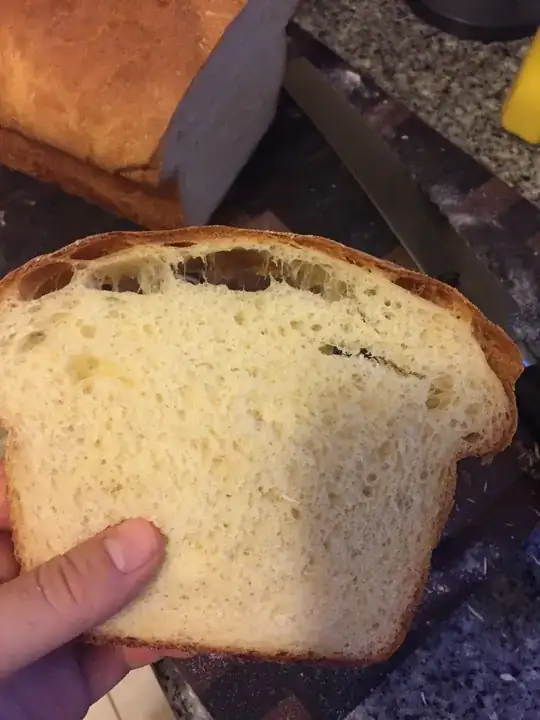It sounds like the gas from the yeast is getting trapped just under the surface of the loaf. The surface layer may have gotten a little dryer and stiff while rising, and definitely sets first in the oven, that might explain why the gas can get through the rest of the loaf to collect there.
If you're otherwise pleased with your loaf's raising and crumb, you might, just before baking, lightly prick the top of your loaf, or add a light slash, to hopefully pierce that top pocket and deflate it before your bread bakes. If you pierce too deeply you might affect the rest of your loaf's rising, since it will let the gas out instead of using it to rise the loaf with. But if you're careful to keep it to the surface, you might pull it off.
Otherwise, if you want a fluffier loaf, you might want to double check your kneading - better developed gluten will trap the bubbles of gas better, so you might not have as much gas collect just under the top crust to form the pocket. If this works, your loaf should be more consistent in crumb - I noticed the bread seemed to be denser towards the bottom (little pockets) and fluffier towards the top in your pictures. This may still happen, depending on causes, but it would be less of a gradient.
Ii also might be that the difference in airiness from the bottom to the top of your loaf is affected by shaping. In your description, you mention folding the bottom of the dough rectangle over - so if your folding is directional (say, top to bottom) instead of even, that might mean the "lower" part of the loaf has been a touch more compressed or worked than the top. In this case, you might try baking the dough "upside down" in your loaf pan - that is, whichever side was down, ends up on top. It might not look quite so nice, if there's a seam (or you might edge the seam to one side), but it might tell you if the shaping method is contributing to the uneven rising.
